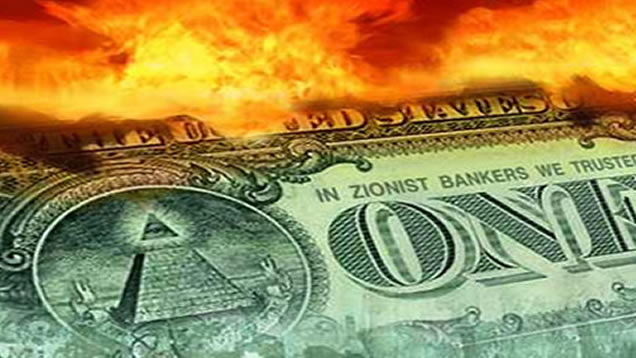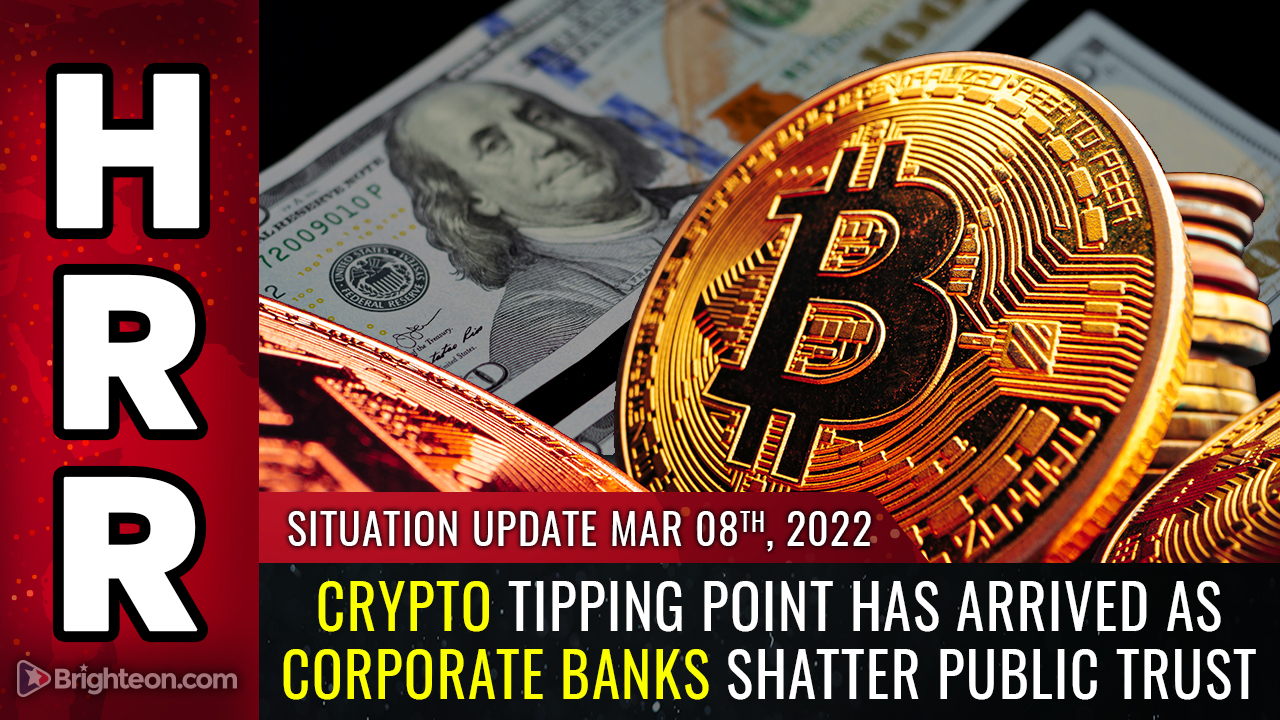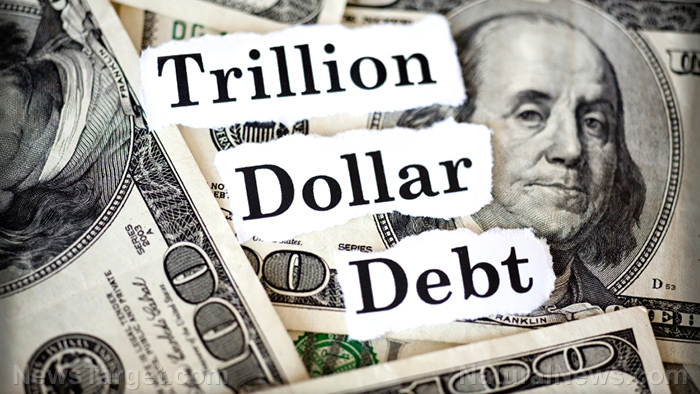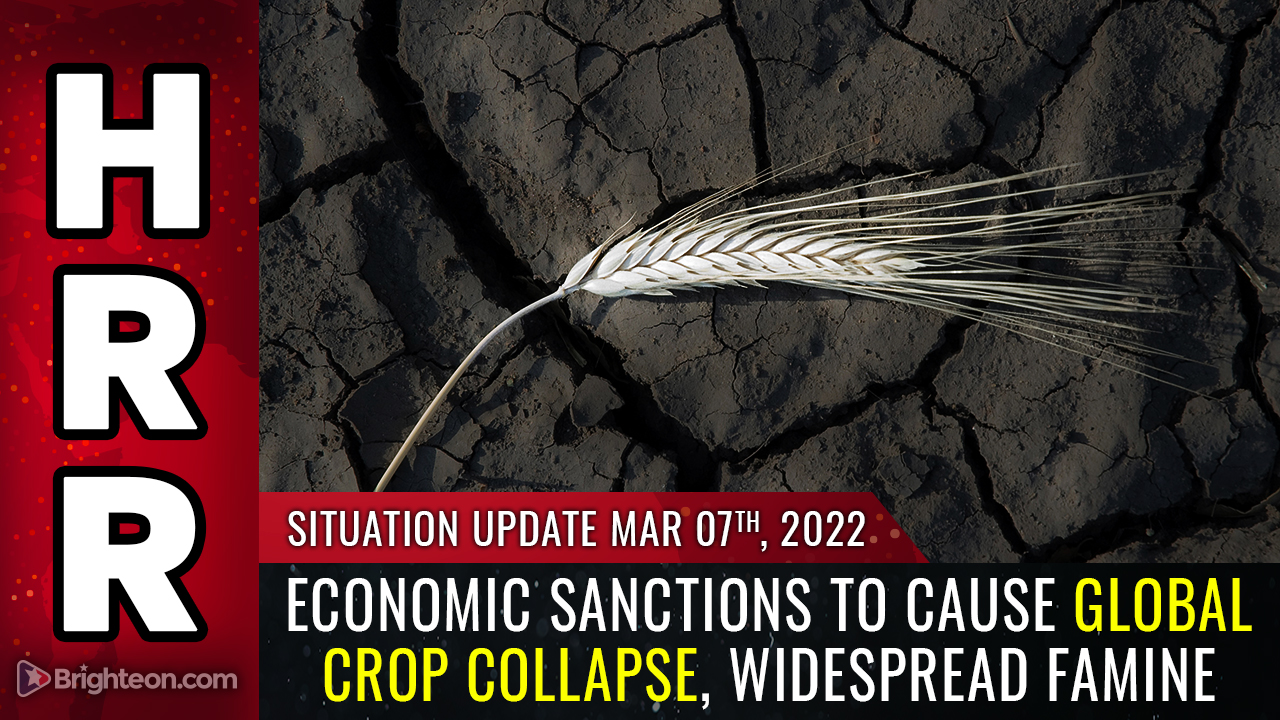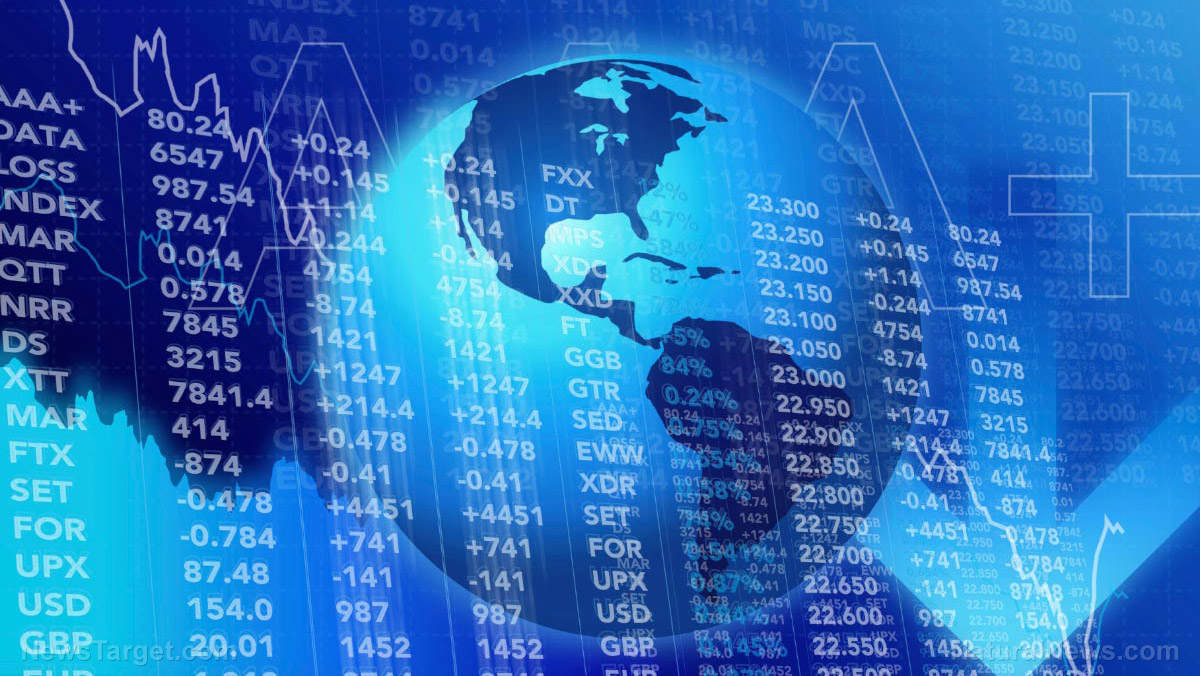Is the Russia invasion of Ukraine a Trojan Horse for The financial reset?
03/14/2022 / By News Editors
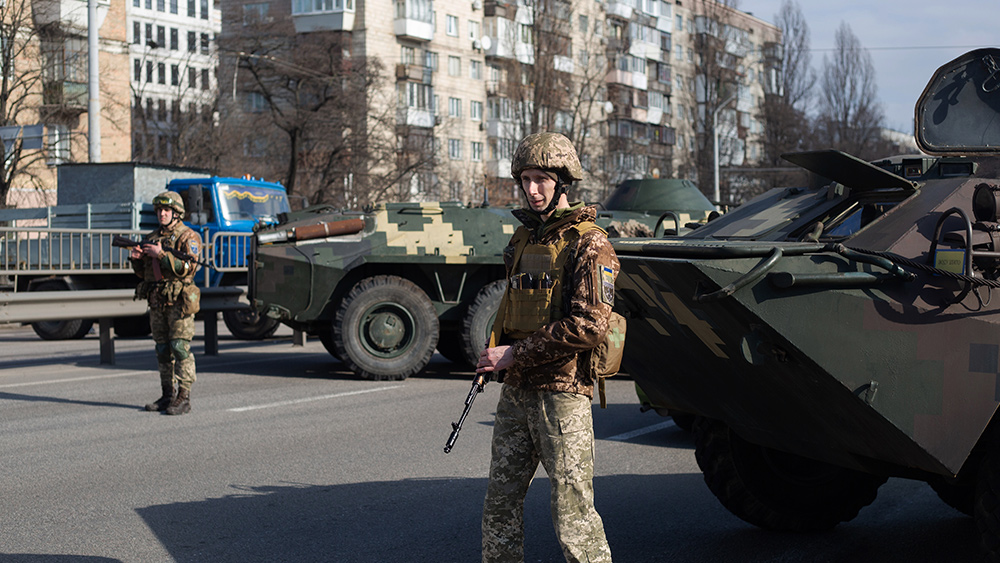
Putin, it would seem, has decided to invade Ukraine as an attempt to prevent the expansion of NATO into the Russian borders. This has been an increasing threat to Russian security according to the Russian President since a Ukrainian government was formed in the aftermath of a 2014 Obama-backed coup.
(Article by Patricia Harrity republished from DailyExpose.uk)
When Russia invaded Ukraine’s Crimea region, Western nations responded with sanctions aimed at making it more difficult for Russia to transact in the U.S.-dominated global financial system, therefore Putin would have been aware that the response to the invasion of Ukraine, would be predictably the same economic sanctions.
Could this be a Strategic plan from Putin who would have known the exact outcome of his actions?
The Background
We are now coming to the close of a financial era that commenced in August 1971, which is that of the “Fiat money,” according to former Bertrand Badré chief financial officer (CFO) of the World Bank.
In 1971 President Richard Nixon suspended the convertibility of the US dollar into gold (source). This in effect ended the 25-year Bretton Woods era agreement and System which had created a collective international currency exchange regime that had been in place since the 1940s. The system required a currency peg to the U.S. dollar so fixed the dollar price to gold (source).
LIVING BEYOND OUR MEANS
The dollar was now free from the gold standard and floated against other major currencies, relieving the pressure on the global major reserve currency and was to unleash a 40-year period of leveraged debt finance, bringing with it a perceived global prosperity and higher living standards for millions of people.
It was also accompanied by bouts of inflation and crashing asset bubbles and now that the discipline to use that responsibility carefully was gone countries began living beyond their means (UK) Unsustainable Debt) (Global debt soars to 356% of GDP).
The debt-based monetary system has an interest rate attached to your money, meaning the debt continues to increase at massively higher rates than the real money increases and according to financial expert John Titus, this results in “periodic bloodlettings.
The Global Financial Crisis – 2008

In 2008 we saw the debt-based system collapsing, this was said to be the worst financial problem to have faced the world since the Great Depression of the 1930s, but the banks were bailed out and up until now have managed to keep afloat through using Quantitative Easing.
Effectively this means they were purchasing longer-term securities from the open market in order to increase the money supply or, Central Banks created and printed money out of nothing, loaned it to the government who pay them back with interest.
The system has spiraled out of control, and the powers that be need to get out of it and bring in a new system of control as the debts are so big.
Their choice of a new system seems to be a central bank digital currency (source).
Another Downturn
The next downturn of the debt-based system was expected, this we can see through a plan devised in August 2019 just a few short months before the plandemic, Blackrock instructed the Fed to get money into wholesale and retail hands when the time arrived, this happened to be less than a month later and maneuvers were acted upon in what Blackrock termed “Going Direct”.
The plandemic was to act as a mask for the Feds maneuvers which began in March 2020 with the sudden creation of $3.5 trillion dollars in reserves in a few weeks. disbursed them so as to cause the parallel, mirror-image creation of $3.5 trillion in new bank money (source). (Important to note here, at the time of the global financial crisis in 2008 the Federal reserve created over $1 trillion in the space of a few short weeks).
A Repo Crisis
This is a banking crisis, every fiat currency has returned to zero, says financial investor Melissa Ciummei, “the pound and the dollar have already lost over 99% of their value and they are just trying to eradicate the other 1%” according to Ciummei, who says that “the end game is totalitarian control along with a financial reset and a digital currency, which is why there is the need for a digital id and passports.
Melissa Ciummei spells out what that will mean for the people in the video below.
The Putin Link
How would this all link with Putin and Rusia?
Well, the United States and its allies on Saturday 26th February 2022 moved to block certain Russian banks’ access to the SWIFT international payment system as punishment of Moscow due to the Russian situation in Ukraine.

The measures included restrictions on the Russian central bank’s international reserves, “We will hold Russia to account and collectively ensure that this war is a strategic failure for Putin,” the leaders of the European Commission, France, Germany, Italy, Great Britain, Canada, and the United States wrote.
“We commit to ensuring that a certain number of Russian banks are removed from SWIFT,” Ursula von der Leyen, president of the European Commission, the European Union’s executive, said in a statement to the media.
“This will ensure that these banks are disconnected from the international financial system and harm their ability to operate globally.”She said that cutting Russian banks off the system will stop them from conducting most of their financial transactions worldwide and effectively block Russian exports and imports.
Allies would stop Russia from “using its war chest,” she said, therefore paralysing the assets of its central bank, freezing its transactions, and making it impossible for the central bank to liquidate its assets. “Finally, we will work to prohibit Russian oligarchs from using their financial assets on our markets,” she said (source).
This of course was predictable to Putin and Russia, and The Central Bank of Russia was indeed central to Putin’s strategy in the years leading up to the invasion.
One “They” Did Earlier
When Russia invaded Ukraine’s Crimea region in 2014 Western sanctions aimed to make it more difficult for Russia to transact in the U.S.-dominated global financial system and the repercussions were severe. The oil prices collapsed, the ruble took a tumble of more than 40% against the U.S. dollar, forcing the Russian central bank to enact dramatic interest-rate increases that pushed the economy into recession.
From that point, the bank embarked on a massive accumulation of foreign exchange reserves, according to a Bloomberg article, and that stockpile, which is now the fourth-largest in the world, at around $643 billion, could be deployed to defend the ruble in the event of another crisis.
De- Dollarisation
November 16, 2019, Vladimir Putin said, “The Dollar enjoyed great trust around the world. But, for some reason, it is now being used as a political weapon to impose restrictions. They’ll collapse soon. Many countries are now turning away from the Dollar as a Reserve Currency.”
Vladimir Putin: “The Dollar Enjoyed Great Trust Around The World. But For Some Reason It Is Being Used As A Political Weapon, Imposing Restrictions. Many Countries Are Now Turning Away From The Dollar As A Reserve Currency. US Dollar Will Collapse Soon.” pic.twitter.com/XjXYw88MB0
— CryptoWhale (@CryptoWhale) February 26, 2022
They have been trying to ‘bulletproof’ their economy from sanctions since 2014,” says Elina Ribakova, deputy chief economist at the Institute of International Finance in Washington (source). and China and Russia have been active within the de-dollarisation since 2014.
China-Russia will ditch dollar:
-In 2015 90% of their bilateral transactions were conducted in dollars.
-By Q1 2020 46% of their bilateral transactions were conducted in dollars.
-De-dollarization results in a Defacto Alliance.
-They’ve been doing this since 2014.
-WHEN not IF. pic.twitter.com/mnLmyhDDGE— CulturalHusbandry (@APhilosophae) February 26, 2022
Yuan-Ruble Payment System ‘Can Counter US Hegemony’

The US unilateral sanctions have created serious risks for other economies and US companies too, they have been pushing major economies, including China, Russia, and the EU, to seek a separate system that could reduce such risks and China and Russia had already agreed to boost the use of the yuan and the ruble in bilateral and global trade and the two countries had already begun to draft a pact.
It was reported that Chinese and Russian officials have had a plan since 2018 to set up a payment system to boost the use of their own currencies in bilateral and international trade is imperative, which Chinese experts said, “to counter what they called the US dollar’s hegemony in the global payment system”.
Russian Prime Minister Dmitry Medvedev to China said in 2018 that China and Russia should have set up such a payment system “10 years ago” and that US sanctions pushed the two countries to pursue the plan. This was also a result of a bitter trade war for China with the US and the sanctions that Russia was facing at that time (source)
The Hegemonic Dollar
Indeed this was a very necessary move because of the constant risk when entirely relying on the dollar,” said Chen Fengying, a research fellow at the China Institutes of Contemporary International Relations, . “Given the dollar’s hegemony, the US could inflict harm on any country it wants at any time, even US companies.”
However, the new payment system might be initially limited to China-Russia bilateral transactions and will have minimal impact on the current system dominated by the US dollar, analysts said.

However, Dong pointed out, the initiative might gain speed because the US’ abuse of the dollar’s hegemony has pushed many economies to actively pursue a separate payment system (source).
BRICS
Additionally, in 2019 Valdai reported that a single payment system, BRICS Pay, was revealed as part of the drive to establish a common system for retail payments and transactions between the member countries who will be able to use their own national currencies as a direct basis of exchange for external payments.
This is being heralded as a serious step on the path to de-dollarization.

The control of advanced technology by the United States and the West, and the ability of their corporations to broaden the use of their established standards in the financial sector to reach international markets led to the division of the world into a financially privileged technological metropolis and a periphery.
This led to the erosion of political sovereignty and reinforced the inferior economic status of the developing world.
Therefore, according to Valdai, any steps the BRICS countries who are Brazil, Russia, India, China, and South Africa, take to create and maintain their own technology and infrastructure are economically viable and will help ensure the independence of the respective countries’ policies and economies (source).
War, What it is Good For?
It has been clear that Russia has had issues with the U.S. hegemony and the expansion of NATO to their bordering countries for years, of course, this would give sufficient reason for Putin to invade Ukraine under the guise of defending the security of his country.
However, the predictable financial sanctions that Putin knew would occur may have been playing right into his hands. allowing the application of a new system for all countries at the risk of the sanctions from the hegemonic U.S..
Nevertheless, the Russia-China plans of de-dollarisation and a payment system of their own were available for even Joe Public to see, the U.S Government clearly knew they had plans and would have undoubtedly known that their sanctions would trigger their implimentation.
Therefore, with the debt-based system at the point of collapse and a financial reset planned and imminent, could it be that the war in Ukraine may also benefit the U.S. by acting as a Trojan Horse for the financial reset – the planned endgame?
Read more at: DailyExpose.uk
Submit a correction >>
Tagged Under:
chaos, Collapse, conspiracy, finance, global reset, government, politics, risk, war
This article may contain statements that reflect the opinion of the author
Get independent news alerts on natural cures, food lab tests, cannabis medicine, science, robotics, drones, privacy and more from NewsTarget.com
Get independent news alerts on natural cures, food lab tests, cannabis medicine, science, robotics, drones, privacy and more from NewsTarget.com
RECENT NEWS & ARTICLES
COPYRIGHT © 2017 DEBT COLLAPSE NEWS



